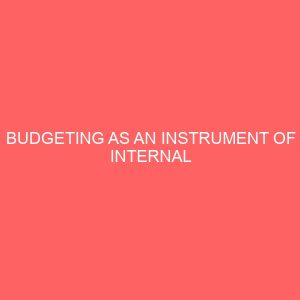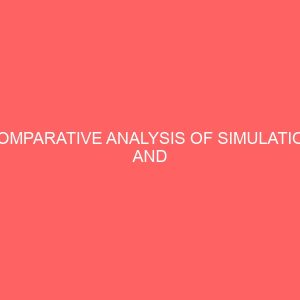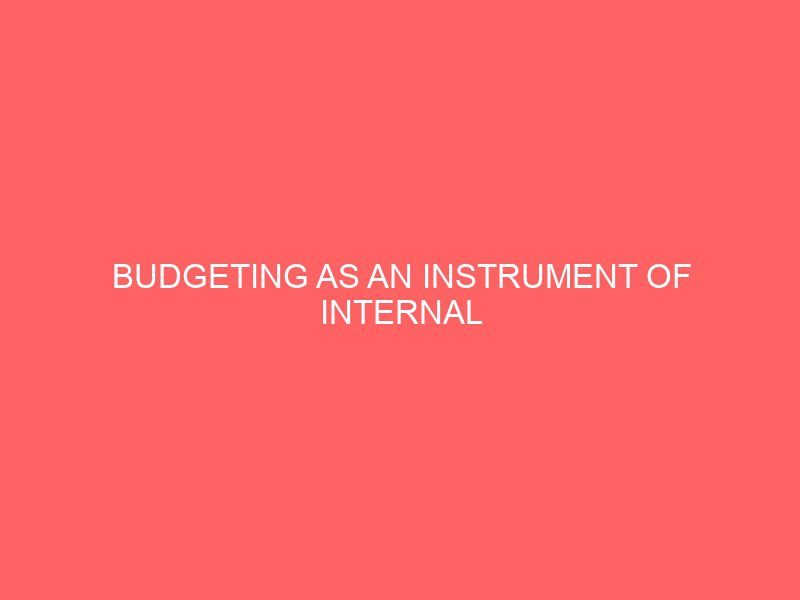Description
THIS RESEARCH WORK IS ON Budgeting as an instrument of internal control-in-a-manufacturing-organization.
Abstract
An efficient budgeting control system is one that produces the desired result. A balanced budget is the one that produces no variances but to achieve this, we are left to contemplation rather than a reality. This has become the problem of most of our manufacturing concerns in Nigeria. This study investigated the budget control and execution in manufacturing concerns in Nigeria with a view of appraising their efficiency. Out of a population of one hundred and fifty six drawn from the manufacturing concern, seventy eight were selected as the sample size using statistical sample tools (Taro Yamani). A questionnaire was designed and distributed to elicit information from the sample population; also data was sourced through primary and secondary sources. These data collected were presented and analyzed by means of tables and percentages. The hypotheses adduced were tested using such tools as chi-square. It was observed that manufacturing concerns do plan their profit so as to minimize losses though the procedure is not religiously carried out. However, it was discovered that the procedure is inadequate and inefficient. An inadequate budget procedure and execution causes a high accumulation of inventory thereby tying down the capital which could have yielded greater profit to the organization. Therefore there is need for the proper control of budgets in manufacturing concerns as to minimize losses and maximize profits.
TABLE OF CONTENTS
CHAPTER ONE: INTRODUCTION
CHAPTER TWO: REVIEW OF RELATED LITERATURE
CHAPTER THREE: RESEARCH METHOLOGY
CHAPTER FOUR: DATA PRESENTATION AND ANALYSIS
CHAPTER FIVE: SUMMARY OF FINDINGS, CONCLUSION AND RECOMMENDATIONS
CHAPTER ONE
According to Enudu (1999), the business environment is characterized by a lot of uncertainties ranging from such factors as: Economic environment, political and legal factors, social environment, supply and demand forces, competition, consumers’ attitude and technological changes.
A critical look at the performances of some of these manufacturing business organizations will reveal a lot of business failures as a result of lack of proper planning against these uncertainties.
According to Drury (2000), proper planning of business helps in reducing uncertainties thereby providing the management of these enterprises with a clear direction by determining their courses of actions.








Reviews
There are no reviews yet.